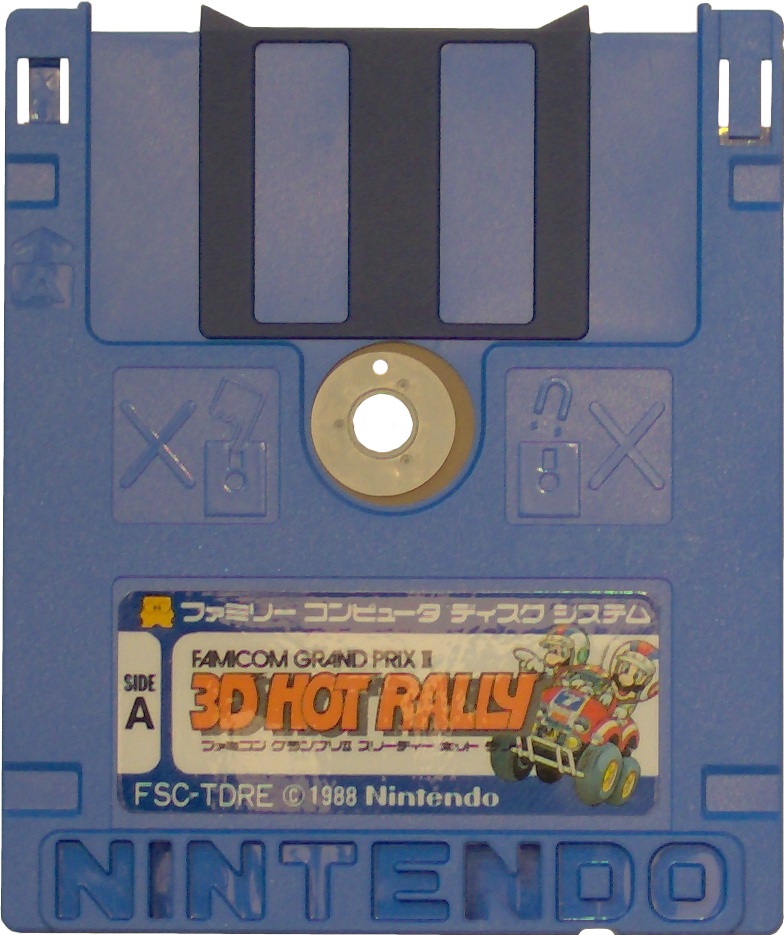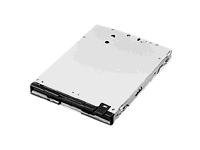

Most early 8" disks were hard sectored, meaning that they had a fixed number of disk sectors (usually 8, 16, or 32), marked by physical holes punched around the disk hub, and the drive required the correct media type for its controller. The Memorex disk was hard sectored, that is, it contained 8 sector holes (plus one index hole) at the outer diameter (outside data track 00) to synchronize the beginning of each data sector and the beginning of a track. The 650 had a data capacity of 175 kB, with 50 tracks and 8 sectors per track. Shugart, by then at Memorex shipped the Memorex 650 in 1972, the first commercially available read-write floppy disk drive. Other suppliers recognized the opportunity for a read/write FDD in applications such as key entry and data logging.
#Mitsumi quick disk transport famico code#
Internally IBM used another device, code named Mackerel, to write floppy disks for distribution to the field. and then as a standard part of most System 370 processing units and other IBM products. The new device first shipped in 1971 as the 23FD, the control store load device of the 2835 Storage Control Unit. IBM introduced the diskette commercially in 1971. The Floppy Disk Drive Patent #3,678,481 was issued Jwith named inventors Warren L. The Floppy Disk Patent #3,668,658 was issued on June 6, 1972, with named inventors Ralph Flores and Herbert E. Initially the disk was bare, but dirt became a serious problem so they enclosed it in a plastic envelope lined with fabric that would remove dust particles. The disk is a read-only, 8-inch-diameter (200 mm) flexible diskette called the "memory disk" and holding 80 kilobytes of data. Dalziel, Jay Brent Nilson, and Ralph Flores and that team developed the IBM 23FD Floppy Disk Drive System (code name Minnow).

Thompson, 23FD Disk manager, along with design engineers Warren L. Wartner, 23FD Disk Drive manager, and Herbert E. Noble, who tried to develop a new-style tape for the purpose, but without success. IBM San Jose's Direct Access Storage Product Manager, Alan Shugart, assigned the job to David L. After 2000, floppy disks were increasingly rare and used primarily with older hardware and especially with legacy industrial computer equipment. The introduction of high speed computer networking and formats based on the new NAND flash technique (like USB flash drives and memory cards) led to the eventual disappearance of the floppy disk as a standard feature of microcomputers, with a notable point in this conversion being the introduction of the floppy-less iMac in 1998. A number of other variant sizes were introduced over time, with limited market success.įloppy disks remained a popular medium for nearly 40 years, but their use was declining by the mid- to late 1990s. There was a significant period where both were popular. This format was more slowly replaced by the 3½-inch format, first introduced in 1982. The more conveniently sized 5¼-inch disks were introduced in 1976, and became almost universal on dedicated word processing systems and personal computers. It was introduced into the market in an 8-inch (20 cm) format in 1972. In 1967, at an IBM facility in San Jose (CA), work began on a drive that led to the world's first floppy disk and disk drive.

Floppy disks were an almost universal data format from the 1970s into the 1990s, used for primary data storage as well as for backup and data transfers between computers. It is read and written using a floppy disk drive (FDD). 8-inch, 5¼-inch, and 3½-inch floppy disksĪ floppy disk is a disk storage medium composed of a disk of thin and flexible magnetic storage medium encased in a rectangular plastic carrier.


 0 kommentar(er)
0 kommentar(er)
